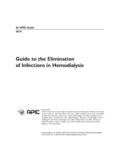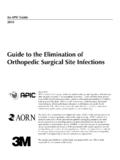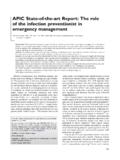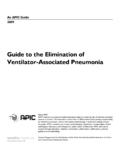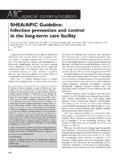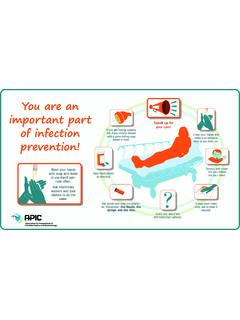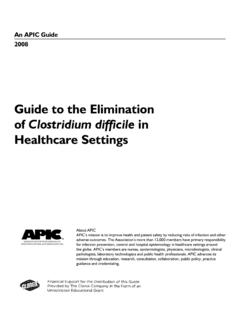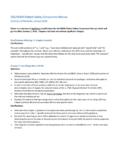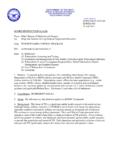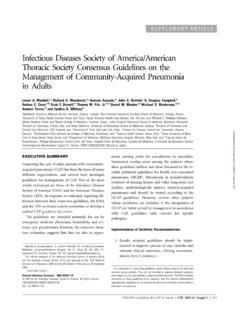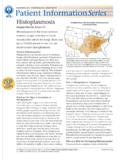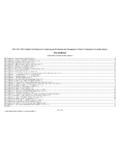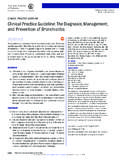Transcription of Improving Surveillance for Ventilator-Associated …
1 Overview and Proposed New Definition Algorithm Improving Surveillance for Ventilator-Associated events in Adults centers for disease Control and Prevention (CDC) National center for Emerging and Zoonotic Infectious Diseases Division of Healthcare Quality Promotion Organization Representative(s) American Association of Critical-Care Nurses Ms. Suzanne Burns and Ms. Beth Hammer American Association for Respiratory Care Dr. Dean Hess American College of Chest Physicians Drs. Robert Balk and David Gutterman American Thoracic Society Drs. Nicholas Hill and Mitchell Levy Association of Professionals in Infection Control and Epidemiology Ms.
2 Linda Greene Council of State and Territorial Epidemiologists Ms. Carole VanAntwerpen HICPAC Surveillance Working Group Dr. Daniel Diekema Infectious Diseases Society of America Dr. Edward Septimus Society for Healthcare Epidemiology of America Dr. Michael Klompas Society of Critical Care Medicine Drs. Clifford Deutschman, Marin Kollef, and Pamela Lipsett The Working Group recognized that there is currently no gold standard, valid, reliable definition for VAP. Even the most widely-used VAP definitions are neither sensitive nor specific for VAP. Therefore, the Working Group decided to pursue a different approach development of a Surveillance definition algorithm for detection of Ventilator-Associated events (VAEs).
3 This algorithm will detect a broad range of conditions or complications occurring in mechanically-ventilated adult patients. Because the reliability of HAI definitions has become particularly important in recent years, the Working Group focused on definition criteria that use objective, clinical data that are expected to be readily available across the spectrum of mechanically-ventilated patients, intensive care units and facilities in other words, criteria that are less likely to be influenced by variability in resources, subjectivity, and clinical practices and that are potentially amenable to electronic data capture. What is the National Healthcare Safety Network (NHSN)?
4 NHSN is the CDC s healthcare- associated infections (HAI) Surveillance system ( ). NHSN uses standard methodology and definitions to collect data from healthcare facilities. More than 5000 healthcare facilities in all 50 states now participate in NHSN. Most participating facilities report data on device- associated HAIs, including Ventilator-Associated pneumonia (VAP). Many states require hospitals to report HAIs using NHSN. How is VAP Surveillance currently conducted in NHSN? NHSN s current pneumonia (PNEU) definitions were last updated in 2002, and were designed to be used for Surveillance of all healthcare- associated pneumonia events , including (but not limited to) VAP.
5 Three components make up the current PNEU definitions: an X-Ray component (required), a Signs and Symptoms component (required), and a Laboratory component (optional). VAP is specifically defined as a PNEU event that occurs at the time a ventilator is in place, or within 48 hours after a ventilator has been in place. There is currently no required duration that the ventilator must be/have been in place for a PNEU to qualify as a VAP. Why is the CDC changing the way VAP Surveillance is done in NHSN? The current PNEU definitions are useful for internal quality improvement purposes, but are limited by their subjectivity and complexity.
6 It is necessary to have objective, reliable Surveillance definitions for use in public reporting and inter-facility comparisons of event rates and federal pay-for-reporting and -performance programs. What is the CDC s process for Improving NHSN VAP Surveillance ? The CDC s Division of Healthcare Quality Promotion (DHQP) is collaborating with the CDC Prevention Epicenters ( ), the Critical Care Societies Collaborative (CCSC, ), other professional societies and subject matter experts, and federal partners. DHQP initiated a collaboration with the CCSC in September 2011, and convened a VAP Surveillance Definition Working Group, consisting of representatives from several organizations with expertise in critical care, infectious diseases, healthcare epidemiology and Surveillance , and infection control.
7 The findings and conclusions in this report are those of the authors and do not necessarily represent the views of the centers for disease Control and Prevention. NHSN Surveillance for Ventilator-Associated events in Adults VentDay PEEPmin FiO2min Tmin Tmax WBCmin WBCmax Antimicrobials Spec Polys Epis Organism 1 10 60 None -- -- -- -- 2 5 40 None -- -- -- -- 3 5 40 None ETA 25/lpf <1/lpf S. aureus 4 8 60 PIPTAZ, VANC -- -- -- -- 5 8 50 PIPTAZ, VANC -- -- -- -- 6 7 40 PIPTAZ, VANC -- -- -- -- 7 5 40 PIPTAZ, VANC -- -- -- -- 8 5 40 PIPTAZ, VANC ETA <1/lpf 0-25/lpf Oral flora PEEPmin=minimum positive end-expiratory pressure.
8 FiO2min=minimum fraction of inspired oxygen. Tmin, Tmax=minimum temperature, maximum temperature. ETA=endotracheal aspirate. PIPTAZ=piperacillin/tazobactam. VANC=vancomycin. Spec=specimen type. Polys=polymorphonuclear leukocytes. Epis=epithelial cells. lpf=low power field. What are the next steps, and when will the new algorithm be implemented in NHSN? The Working Group has identified key research agenda items, which include: oEvaluation of candidate variables to use in achieving additional unit-level risk adjustment or stratification of Ventilator-Associated condition and complication rates. Rates ( events per 1000 ventilator days) will be stratified according to the current NHSN standard by intensive care unit type, and for selected unit types, by bed size and academic affiliation.
9 OEvaluation of denominator ( ventilator day) data collection strategies. The goal for implementation in NHSN is January 2013. For additional information, go to , or the following: APIC Contact: Ms. Linda Greene Email: Phone: (585) 922-5607 APIC Contact: Ms. Katrina Crist Email: Phone: (202) 454-2601 CDC Contact: Dr. Shelley Magill Email: Phone: (404) 639-0291 What progress has the Working Group made? The Working Group has proposed a new Surveillance definition algorithm to detect VAEs in adult patients. It is not designed for use in the clinical care of patients. The Working Group anticipates that the new definition algorithm will continue to be refined, based on the results of field experience and additional research.
10 The definition algorithm refinement process is, and will continue to be iterative, and will require the ongoing engagement of the critical care, infection prevention, infectious diseases and healthcare epidemiology communities. What is the new, proposed NHSN Surveillance definition algorithm? The definition algorithm (presented on page 3) is only for use with the following patients: oPatients 18 years of age; oPatients who have been intubated and mechanically ventilated for > 2 calendar days; and oPatients in acute and long-term acute care hospitals and inpatient rehabilitation facilities. oNOTE: Patients on high frequency ventilation or extracorporeal life support are excluded from VAE Surveillance .

